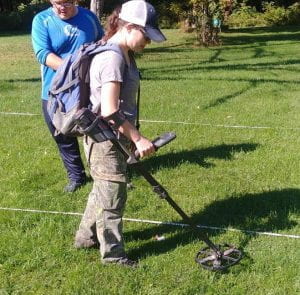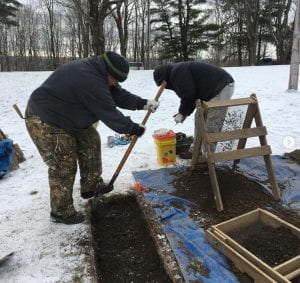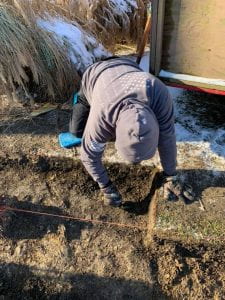Written by Janee Becker

My thesis research focuses on archaeological investigations at The Wigwam in Dubois, PA. The Wigwam Project investigates the historic context and potential significance of 20th-century Native American performer campsites in western Pennsylvania. The Wigwam is the former home of Major Israel McCreight, a prominent historical figure in local Dubois history. The property was built in 1906 and has historically been documented as a camp for Buffalo Bill’s Wild West Show, a haven for visiting Native Americans, and the location of a Six Nations Mowhawk tribe council house. Aside from Buffalo Bill Cody, Major Israel McCreight often hosted chiefs Flying Hawk and Iron Tail and was considered a life-long friend and defender of Native Americans.
No previous cultural resource investigations have been conducted within the vicinity of the Wigwam property. Therefore, this project attempts to locate features related to historic Native American performer campsites using metal detector and geophysical survey in the form of magnetic gradiometer survey. Archaeological investigations of these deposits excavated approximately four and a half square meters. These investigations recovered approximately 870 artifacts including charcoal, lithic debitage, and a piece of worked glass potentially associated with historic Native American short-term use of the site.
Classical research into the historic assimilation of Native Americans often focuses on the dichotomy of change and continuity from precontact cultural practices to European colonialism (Silliman 2009). Therefore, it often obscures the use of Euro-American materials by Native Americans to represent their own cultural heritage; creating a narrative of Native American authenticity (Cipolla 2013b). This belief in authenticity implies that to be a true Native American, the cultural lifeways and materials must reflect precontact cultural practices. Silliman (2009:212) rightly questions the appropriateness of using these “precontact cultural practices as the baseline” in archaeological research.
Data collected through these investigations attempt to address the adaption and resiliency of Native American’s during the period of 1906 through 1913. Research questions will explore the pressures of this time-period on Native American lifeways and how these pressures influenced Native American performer identity. These investigations are a study of archaeological materials associated with the with these changing identities.
Follow IUP Anthropology on Facebook, Instagram, and Twitter
